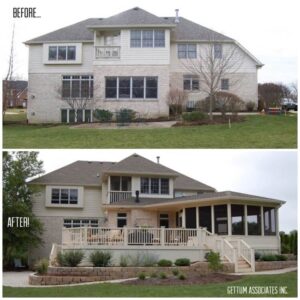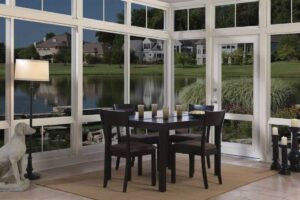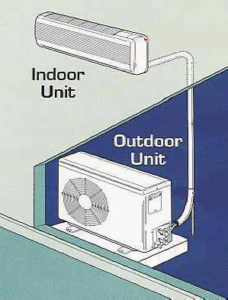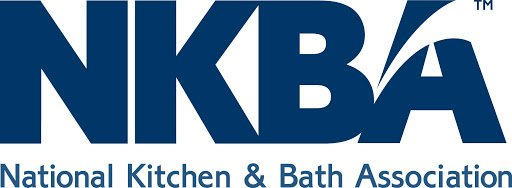The old yet functional bathroom fixtures you use in your home might look trendy or vintage, but they might also use an extraordinary amount of water that new bathroom fixtures wouldn’t normally use. Although you might not be convinced that features like “low flow” toilets are worth it, you might be surprised how efficient and reliable these eco-friendly options have become.
Don’t assume an efficient, new faucet won’t give you enough water when you want to wash your hands or your dual-flush toilet won’t take care of its business with a single flush. New fixtures and bathroom features today offer style, as well as excellent functionality and low water usage. Here are some interesting facts about how you can save money and the planet with a remodeled bathroom.
Toilets: Low Flow to High Efficiency
In the 1990s, toilet manufacturers introduced low-flow toilets that were supposed to use far less water with each flush. Although the intent behind these new toilets was solid, many homeowners were dismayed to find that the toilets required two or even three flushes to equal the power of their old toilets.
Unfortunately, a low-flow toilet that you had to flush twice eliminated almost any water savings you’d enjoy. As homeowners became dissatisfied with the federally mandated low flow toilets, manufacturers knew they had to design better units that would eventually reach a point where less water was used, and the “job” only took a single flush.
Today, you have many options for choosing an efficient toilet, and House Logic shares that you can actually save a fair amount on your utilities each year by installing one:
“Replacing an old water-guzzler with a new low-flow toilet can shave as much as $90 off your annual utility bill and send thousands fewer gallons of water down the drain.”
It might take a few years for your new, efficient toilet to pay for itself in utility savings, but the thousands of gallons of water you’ll save over those few years are quite worth the investment. Today’s efficient toilets are also available at almost every price point from budget options that cost less than $100 to luxurious toilets that cost several hundred dollars.
Did You Know? The most efficient low-flow toilets today save even more water than the government requires.
Installing Efficient New Faucets
One of the most visible and affordable options you have for improving the appearance of your bathroom during a remodel is replacing the faucets at the sink and shower. In most cases, there is no need to modify the pipes or the architecture of the sink and shower since many faucets and showerheads are crafted in a standard style.
While you may assume you can save enough water by shutting the faucet off while you brush your teeth, the government has created a program through the Environmental Protection Agency (EPA) called “WaterSense,” which is a label placed on bathroom faucets and accessories that save water even when the faucet is running.
According to the EPA:
“WaterSense labeled bathroom sink faucets and accessories that use a maximum of 1.5 gallons per minute can reduce a sink’s water flow by 30 percent or more from the standard flow of 2.2 gallons per minute without sacrificing performance. We could save billions of gallons nationwide each year by retrofitting bathroom sink faucets with models that have earned the WaterSense label.”
Your bathroom remodeling contractor is an excellent resource when you want to identify the most efficient faucets and showerheads for your bathroom that also offer a pleasing style for your new bathroom. Don’t assume your faucets will look ugly if they’re efficient. Manufacturers know that homeowners want beautiful bathrooms, and they’ve designed faucets that accomplish the dual goals of style and efficiency.
Your Water Heater: Going the Distance for an Eco-Friendly House
Not all new and efficient appliances and devices in your home will represent huge savings in utility bills when compared with the money you have to invest in those devices at the outset. However, if you’ve decided to create a truly eco-friendly home, it might be time to consider other improvements like tankless water heaters.
When they were originally introduced, companies that sold tankless water heaters suggested they would save the average family a lot of money on their electricity bills. However, the price of tankless water heaters versus regular water heaters can be significant enough that any savings on utilities may take several years to be realized.
The same idea often applies to extra-efficient devices or features that eliminate reliance on fossil fuels. For example, solar panels on your roof are an excellent way to reduce your carbon footprint, but they can require significant investment. You may need to balance the cost of a device with the expected savings to determine whether it’s the best investment for your family.
If you’re looking at a significant bathroom remodel with completely new faucets, toilets, and showerheads, a look at your water heater might be in order.
The Department of Energy offers guidance:
“When selecting a new water heater for your home, choose a water heating system that will not only provide enough hot water but also that will do so energy efficiently, saving you money. This includes considering the different types of water heaters available and determining the right size and fuel source for your home.”
Plan Your Bathroom Remodel with Gettum Associates, Inc.
If you’re searching for an experienced contractor in the Indianapolis area for your bathroom remodel, contact Gettum Associates, Inc., and make sure to download our free eBook: Seven Questions to Ask When Choosing a Remodeler in the Indianapolis Area.















